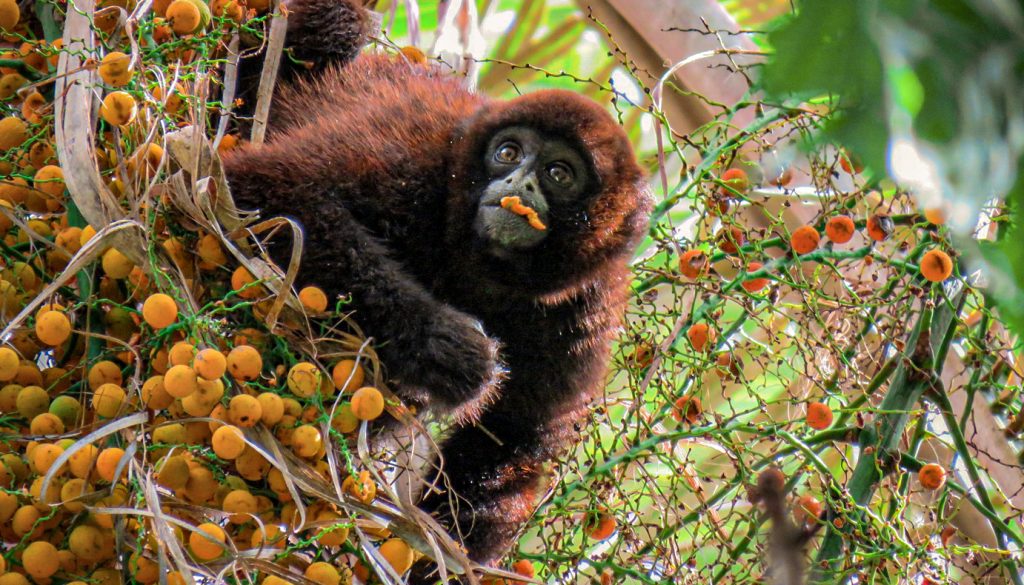Preserving Peru’s Precious Cloud Forest – Conservation Project
In a remarkable collaboration, Trentham Monkey Forest has joined forces with the Primate Society of Great Britain (PSGB) to support a vital conservation project led by researcher Lorena Fernandez.
The project focused on evaluating the impact of 15 years of community conservation efforts in the Campesino Community of Yambrasbamba in Peru.
At the heart of this endeavour is the critically endangered yellow-tailed woolly monkey (Lagothrix flavicauda), one of the most threatened primate species globally.
The yellow-tailed woolly monkey is not only a symbol of Peru’s rich biodiversity but also a species facing the looming threat of extinction. Classified as Critically Endangered and remarkably understudied, this primate holds the key to understanding the delicate balance of the ecosystem it inhabits—the cloud forest near El Toro, North eastern Peru.
The cloud forest, situated in northern Peru, is the yellow-tailed woolly monkey’s natural habitat. This ecosystem, however, is not just any forest; it is part of one of the most fragile and threatened ecoregions globally. The cloud forest plays a pivotal role in maintaining balance within the environment and is particularly vulnerable in the current context of the climate crisis.
While the study is concentrating on Woolley monkeys, other primates who reside in this area are the following. This means they are also affected by the same factors as the woolley monkeys, and will therefore also benefit from the conservation efforts too!
- Peruvian night monkey
- White-bellied spider monkey
- Marañón white-fronted capuchin
The Aim of the Study:
Lorena Fernandez, as the project lead, expressed the primary goal of the study: to estimate the size of the wild population of yellow-tailed woolly monkeys in the cloud forest of northern Peru. The objective was to assess whether, after 15 years of dedicated community actions aimed at protecting and raising awareness about the importance of biodiversity, the monkey populations have been sustained or, ideally, have experienced growth.
The urgency of this study is underscored by the prevailing climate crisis, which poses unprecedented challenges to biodiversity worldwide. By focusing on the yellow-tailed woolly monkey, the researchers not only shed light on the primate’s status but also contributed to the broader understanding of how climate change impacts the cloud forest and its inhabitants.
Lorena highlights the significance of community conservation work, emphasizing the 15-year commitment in the Campesino Community of Yambrasbamba. The yellow-tailed woolly monkey serves as a flagship species for these efforts, symbolizing the broader mission of preserving biodiversity and securing the future of the cloud forest.
Trentham Monkey Forest’s financial support of this project, through the PSGB Monkey Forest grant, demonstrates our commitment to a wider conservation effort. By investing in this ground-breaking study, we are playing an important role in helping Lorena advance important scientific knowledge and promote sustainable practices to safeguard the natural world.
As we eagerly await the results of Lorena’s fascinating study, it is clear that the collaboration between Trentham Monkey Forest and the Primate Society of Great Britain is a testament to the power of collective action in the face of environmental challenges.
Best of luck Lorena and thank you for your part in supporting the planets threatened primates!

